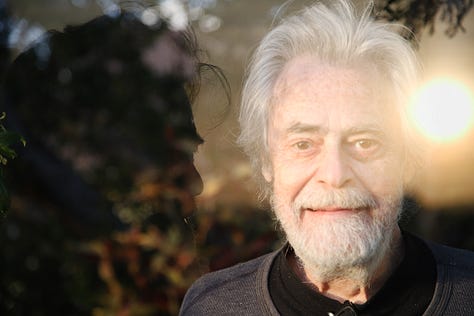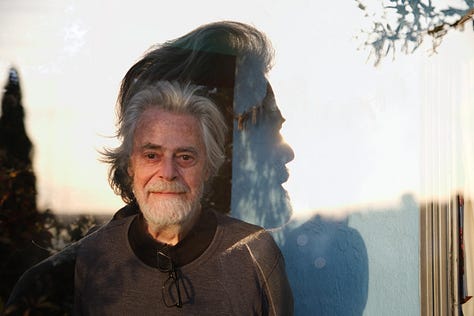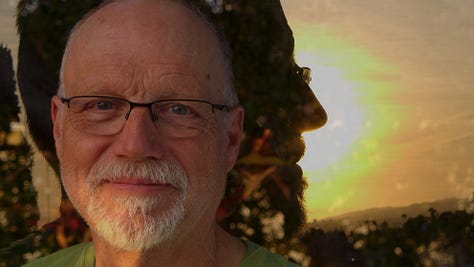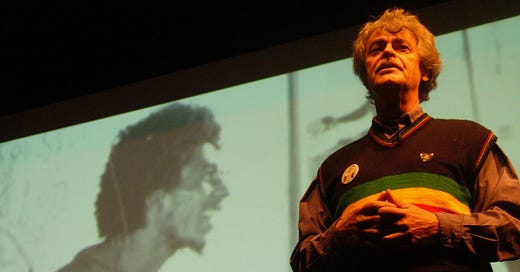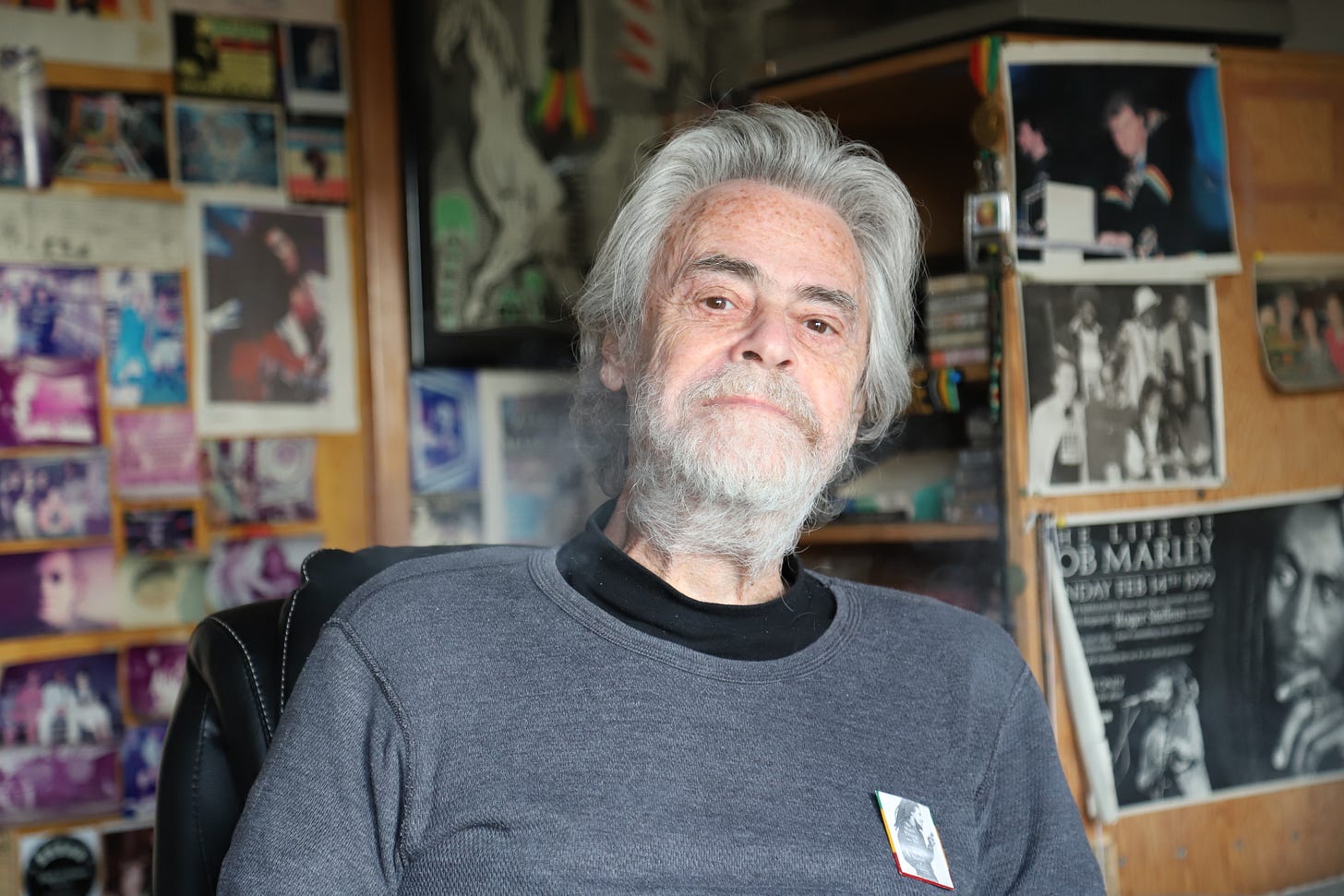Rhythms of Reggae: A Personal Odyssey with Roger Steffens
A peek into the Ark-Hives: the world's biggest collection of reggae-related music and memorabilia
Groundhog Day, 1985
A friend and I went to see a presentation called “The Life of Bob Marley” by Roger Steffens at Portland State University. The house was packed, and because we got there a little late, the best we could manage were seats at the back. Still, we were entranced with the presentation. Roger showed photos and video clips of Bob Marley, told stories, and shared details and anecdotes we’d never heard before in a fascinating multimedia presentation. As much of a Marley fan as I was, this information added to my understanding of the Jamaican singer’s life and times.
If memory serves correctly, Roger began the presentation with a quote he’s used countless times in presentations, something he’s said so many times, I have no doubt this is etched into his consciousness:
Reggae music crawls into your bloodstream, like some vampire amoeba from the psychic rapids of upper Niger consciousness.
--Michael Thomas, a gonzo Australian journalist.
Roger’s Introduction to Reggae Music (and mine, too)
Roger had come across an article in Rolling Stone around 1973 that included that quote about reggae, and it intrigued him so much that he had to find out more. His comment rang a bell. I also recalled seeing an article in Rolling Stone around the same time. Hey, it might have been the same story!
A quick digression: I’d been a 20-year-old DJ and music director at KACI-AM in The Dalles, Oregon, at my first radio job. While in The Dalles, my wife (I married young, but it didn’t last!), who worked at a local restaurant, assisted a pair of stranded hippie travelers, who, on their way out of town, dropped her off at our duplex apartment, and as a gift for her helping them out, introduced themselves to me. They also gave me a copy of Bob Marley’s “Natty Dread” album. I recognized his name since I’d just read the article recently about Marley. I flipped the album onto the turntable and listened to it at least twice that night. That was my introduction to Bob Marley and the Wailers. I loved it and was hooked.
After the Life of Bob Marley show, I went to the front, where Roger spoke with fans and attendees. I introduced myself, and we spoke briefly. He invited me to listen at midnight that night to the local community station, KBOO, where he’d share several selections from his extensive reggae collection. Back home, I taped the show, and at one point, I called into the station and had another brief conversation with him about Marley, reggae, and related topics. I felt like we’d made a bit of a connection.
The 1985 KBOO Roger Steffens Guest Appearance
Here’s the recording of that show. Yes, it’s long, but if you’re a reggae fan, take some time and give a listen:
A decade or two slipped by, and I’d occasionally see Roger Steffens's name here and there. But we didn’t stay in touch or reconnect until the mid-2000s. By then, my radio career had unceremoniously ended, and I was working for a tradeshow exhibit company in Salem. As one of my duties, I attended a large Natural Products tradeshow in Anaheim to assist clients and pitch potential clients. Roger lived in LA; somehow, I found an email or phone number and contacted him. He invited me to stop by his house, which surprised me a bit, but I was glad to do so.
It was March 2007, a good two decades-plus after we’d first met in Portland, when I stopped at his house near Echo Park, north of downtown LA. I’d only been there a short time. He had started giving me a tour of his extensive reggae archives (dubbed the Ark-Hives by Peter Tosh) when the doorbell rang. I’d been recording the tour on a digital recorder and taking a few photos. Roger said, “Keep the tape rolling,” and went to the door where he welcomed several members of the Wailers, including Aston “Family Man” Barrett, who played bass for the Wailers. The band was in town that night, and Roger had half-expected them to stop by. Once Fams, as Aston is known, was introduced and they all got comfortable, Roger continued the tour, which took about 45 minutes and took up most of his house.
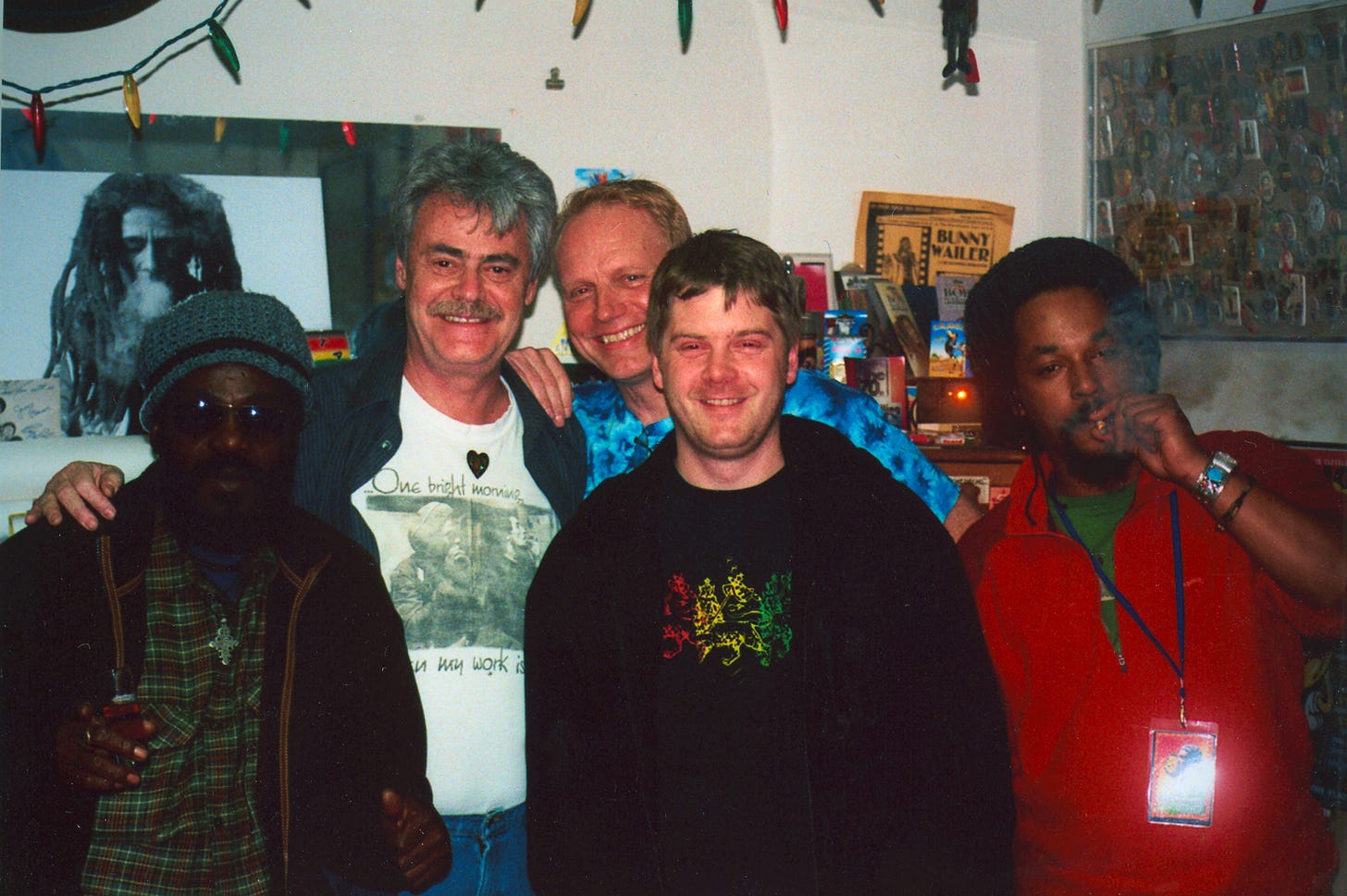
Seven Rooms Jam-Packed with Reggae Memorabilia
I’ve never seen anything like it. Short version: there are hundreds of thousands of reggae-related items that Roger has collected over the years. It’s the most extensive reggae collection in the world. It includes music, live recordings (every known Bob Marley and the Wailers live concert, for example), Jamaican pressings, posters worldwide, buttons, drawings, and so much more. It’s overwhelming, and its scope is a a bit difficult to comprehend.
I’ve gotten the full Ark-Hives tour twice. Since then, I’ve visited Roger and his wife, Mary, a dozen or more times and have always been warmly welcomed. I’ve had dinner there several times, seen interesting video clips, listened to reggae music, and heard tales of his countless interviews with reggae stars, including his hours and hours of interviews with Bunny Wailer for a book that will never see the light of day because Bunny eventually pulled the plug on it (Bunny died in March 2021).
Roger has gifted me thousands of hours of digital music and video reggae clips, including hundreds (maybe thousands) of Jamaican 45s, digitized over the years by his son Devon. As a reggae fan who loves the deep roots and the original recordings from the early era of reggae music, it’s a delightful treasure trove. Much of that music shows up on the reggae show I host every Monday night from 7-9 p.m. as a volunteer at a local radio station, KMUZ.
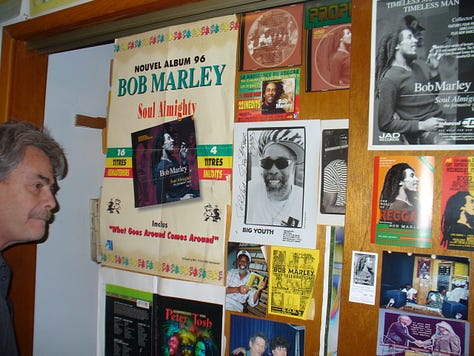

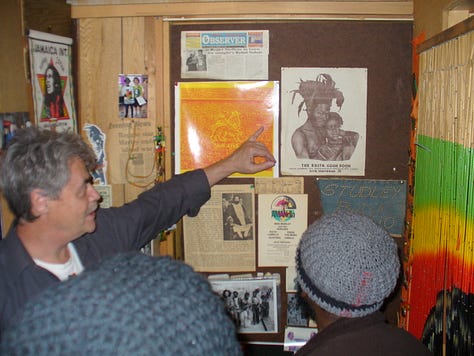
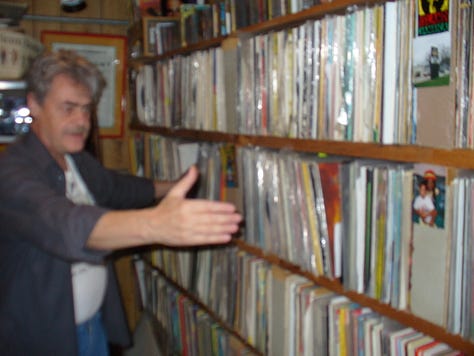
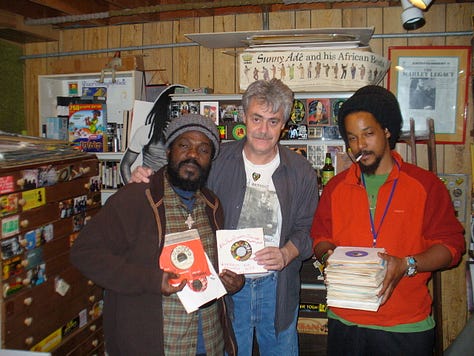
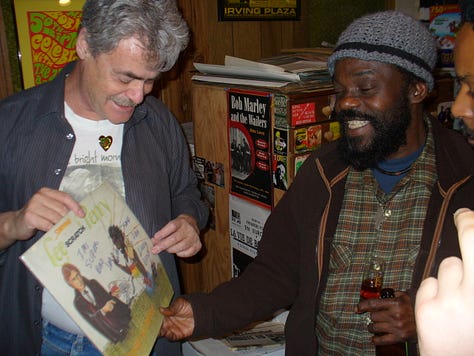
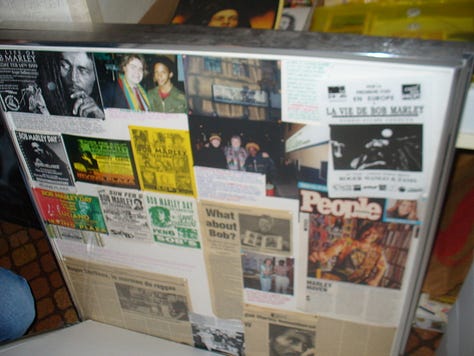
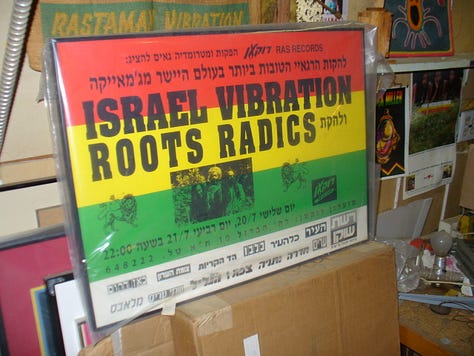
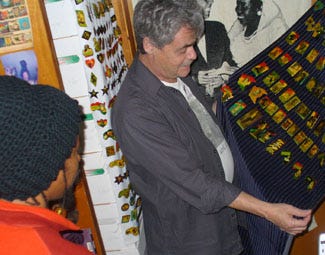
The Numbers Behind the Ark-Hives
There are hundreds of thousands of items in the Ark-Hives. I asked Roger to give me some sense of the scope of the collection:
30,000 reggae photos from 1976 through the present and the rights to them
3,000 books and magazines, including a virtually complete 52-year run of Rolling Stone
10,000 reggae records and CDs
140 cubic feet of reggae clippings
2,000 hours of reggae videos
14,000 hours of reggae cassettes
200 hours of Reggae Sunsplash master tapes
2,000 large reggae posters
30,000 worldwide reggae fliers
1,000 reggae business cards
1,000 stickers
1,500 t-shirts
3,000 reggae buttons
2 albums of scores of Bob Marley stamps
Several terabytes of photos, articles, live concerts, artists’ discographies, rare dubplates, etc.
PLUS:
Paintings, statues, promotional materials, clothing, banners, backstage passes, rare Marley and Ethiopian stamps, smoking materials, and hundreds of other reggae/Rasta memorabilia.
What’s Next for the Ark-Hives?
For years, Roger has tried to find a permanent home for the Reggae Ark-Hives and has two stipulations:
It must be kept together and not sold off piecemeal.
The public must have access.
It’s been a long, tortuous road, and while it’s still not over, a deal has been struck. Josef Bogdonavich of DownSound Records, the principal of SumFest, has agreed to purchase the archives, and they will eventually be housed in a facility to be constructed at Catherine Hall Entertainment Centre in Montego Bay, the home of Reggae Sumfest. It’s been in the works for years, and unfortunately, things take time in Jamaica, so there is no definite date when all of this will commence. Roger’s note on the matter:
The Archives were bought a few years ago by entrepreneur Jo Bogdanovic, promoter of Sumfest and Sting. We plan to build a Museum to house them in Montego Bay, on a plot of land owned by the Jamaican government, adjacent to the Sumfest site. So far, they have not given us the lease, and negotiations are ongoing. In the meantime, several older collectors have left me their own collections, with the knowledge that they will become an integral part of the Museum, with all appropriate credits given.
The Reggae Beat Radio Program
Roger hosted a reggae program in LA for years, but I was unclear on the details and asked him to elaborate:
The Reggae Beat began on October 7, 1979, the first reggae radio program in L.A. Hank Holmes and I spent a year trying to find a station and finally were given a shot on KCRW, a tiny 110-watt NPR outlet headquartered in a Junior High School classroom with great plans to grow. The show was an instant fundraising phenomenon and eventually earned over two million dollars for the station. Our first guest was Bob Marley, quickly followed by folks like Peter Tosh, Culture, Burning Spear, Ras Michael, and a host of others. I left the show in 1987 when the music turned really slack. It ended on its 15th anniversary in 1994. The show led to many things: A cable TV program that ran for 23 years called "L.A. Reggae." It was created and produced by a Trinidadian drummer/video maker named Chili Charles.
In 1981 a woman named C.C. Smith came aboard to do "Reggae Beat's" calendar of events and suggested we begin some kind of newsletter to alert the L.A. audience to coming events and publish our playlists. The first issue was a one-page 14" double-sided mimeograph. The second issue began a year of pamphlet-sized B&W issues. In our second year, we added a color cover in a Time-magazine-sized edition. By the third year, we were a glossy bi-monthly, eventually being distributed worldwide thanks to Tower Records, now known as Reggae and African Beat magazine, and finally morphing into simply The Beat, whose circulation reached more than 40,000. It was widely recognized as the premiere reggae and African publication in North America and ran until 2009.
In 1982 Chris Blackwell asked me to become the National Promotions Director of Island Records in America and directed me to begin a syndicated one-hour radio program called "The Island Hour," hosted by me. I insisted Hank join me on it, and after 12 shows, Blackwell withdrew his support. So Hank and I continued it as "Reggae Beat International." It grew to be carried on 130 stations all around the planet, and we were getting fan mail from Poland, Kenya, Japan, and more, and produced 180 episodes from 1982-1987.
Books by Roger Steffens
Roger is a prolific writer and has published some of the most heavily detailed and thorough books on Bob Marley’s life, music, and the world of reggae. One of the most interesting to me is the “Reggae Scrapbook” by Steffens and Peter Simon. It’s exactly as you might expect: a wide-ranging scrapbook of the reggae world.
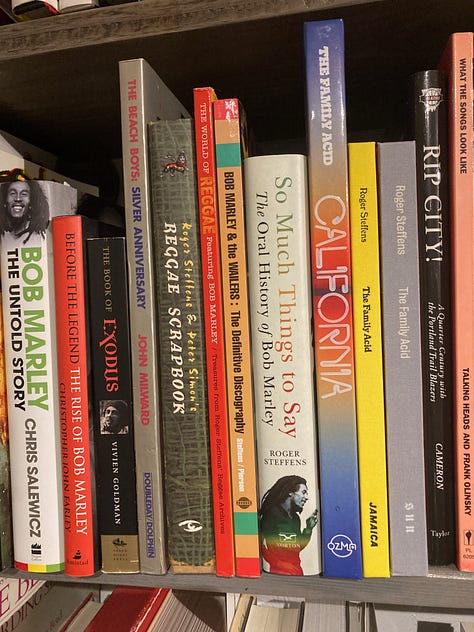
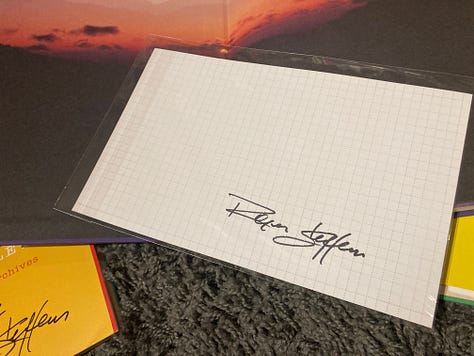
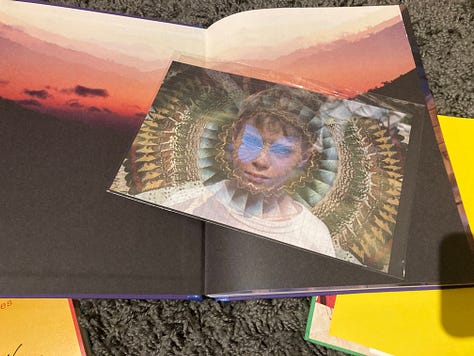
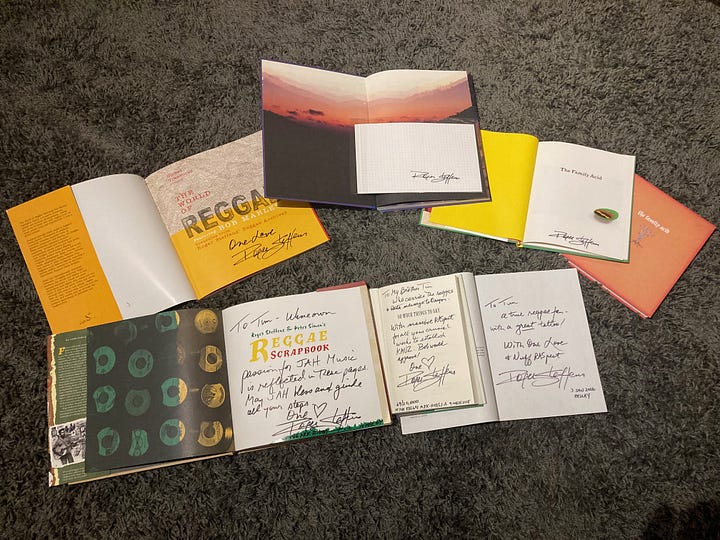
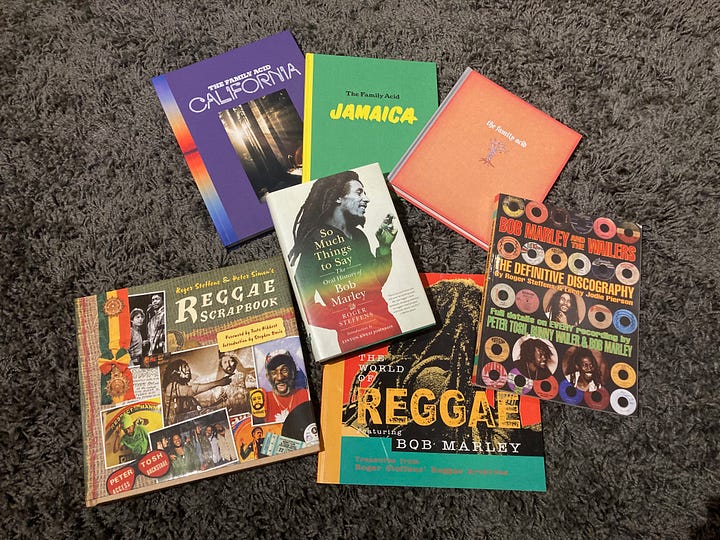
Another Marley book worth checking out is “So Much Things to Say: The Oral History of Bob Marley” currently in its third printing. With over 500 Marley books written, Rolling Stone headlines its review “This Might Be the Best Marley Book Ever.”
If you’re into the details of Marley’s discography, look no further than “Bob Marley and the Wailers: The Definitive Discography” by Steffens and Leroy Jodie Pearson.
The Family Acid Instagram
Besides his writing, speaking, and collecting, Roger has been a prolific photographer and has published three books of his photos. To get a glimpse of his photos, check out The Family Acid, an Instagram account curated by his daughter Kate, which features thousands of his slides, which have been digitized over the years. The three books are “The Family Acid,” “The Family Acid: Jamaica,” and “The Family Acid: California.” Each captures a time and place that have sadly receded into the past, so it’s freakin’ great to see all of these photographs see the light of day and have new eyes and minds ponder them.
More Resources on Roger
While this article focuses on the intersection between my connections with Roger and the Ark-Hives, there are many more things to dig into if you’re interested in learning more about him and his world of reggae.
First, you can take a brief tour of the archives:
Check out his Wikipedia page here.
Going back a decade, Reggaeville extensively interviewed Roger about his archives.
More recently, Reggae Report looked inside the vaults.
Earlier this year, the Jamaica Observer did a nice piece on Roger and his fifty years in the world of reggae.
Never-before-seen photos of Jamaica in the 70s from The Standard Hotel.
The Family Acid on Instagram (definitely follow this account!).
Finally, some photos…
Double Exposures by and of Roger
Roger has experimented with in-camera double exposures, having taken thousands of them. While I’ve taken a lot of double exposures as well, I certainly haven’t taken as many as he has. When I dropped by in March, we played around with cameras, and here’s what we came up with.
